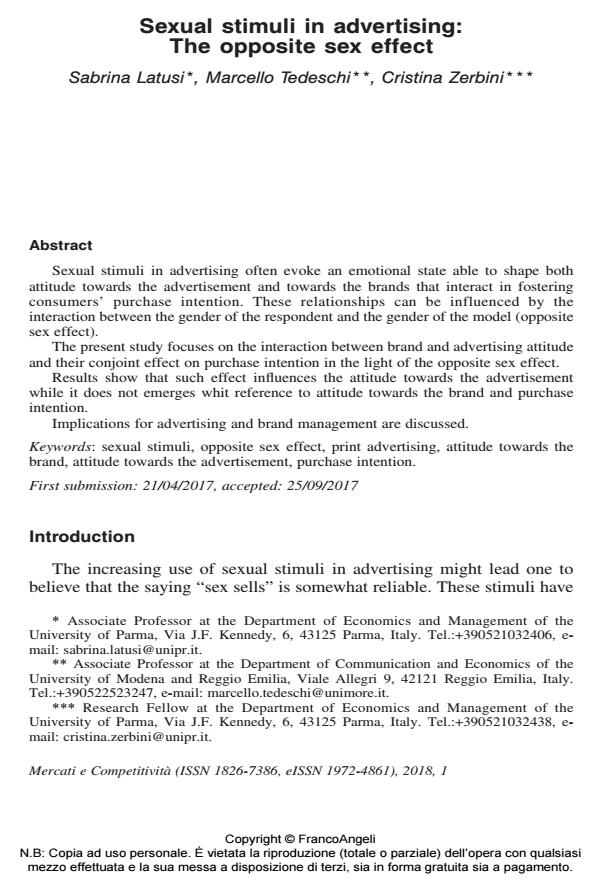Sexual stimuli in advertising: The opposite sex effect
Journal title MERCATI & COMPETITIVITÀ
Author/s Sabrina Latusi, Marcello Tedeschi, Cristina Zerbini
Publishing Year 2018 Issue 2018/1
Language English Pages 16 P. 115-130 File size 1190 KB
DOI 10.3280/MC2018-001007
DOI is like a bar code for intellectual property: to have more infomation
click here
Below, you can see the article first page
If you want to buy this article in PDF format, you can do it, following the instructions to buy download credits

FrancoAngeli is member of Publishers International Linking Association, Inc (PILA), a not-for-profit association which run the CrossRef service enabling links to and from online scholarly content.
Sexual stimuli in advertising often evoke an emotional state able to shape both attitude towards the advertisement and towards the brands that interact in fostering consumers’ purchase intention. These relationships can be influenced by the interaction between the gender of the respondent and the gender of the model (opposite sex effect). The present study focuses on the interaction between brand and advertising attitude and their conjoint effect on purchase intention in the light of the opposite sex effect. Results show that such effect influences the attitude towards the advertisement while it does not emerges whit reference to attitude towards the brand and purchase intention. Implications for advertising and brand management are discussed.
Keywords: Sexual stimuli, opposite sex effect, print advertising, attitude towards the brand, attitude towards the advertisement, purchase intention.
Sabrina Latusi, Marcello Tedeschi, Cristina Zerbini, Sexual stimuli in advertising: The opposite sex effect in "MERCATI & COMPETITIVITÀ" 1/2018, pp 115-130, DOI: 10.3280/MC2018-001007